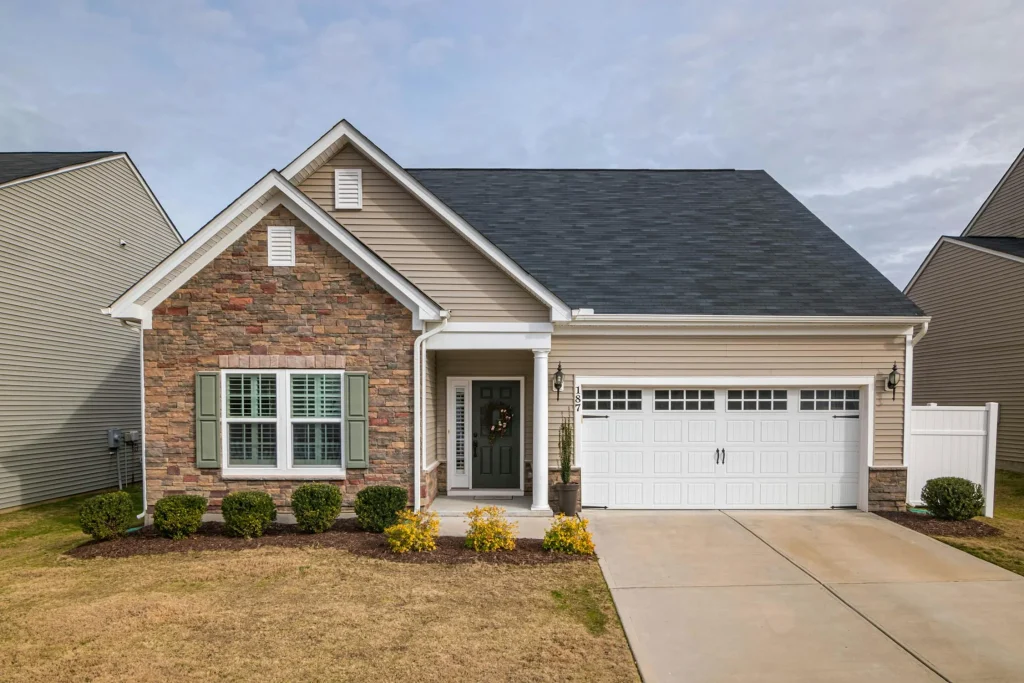The Practical Homeowner’s Guide: Essential Repairs and Installs That Matter Most

Keeping your place in good shape goes beyond seasonal cleanup. Whether it’s summer heat or
icy winters in Kearney, Missouri, the elements test how well-built and well-cared-for your
structure is. Local residents benefit from staying ahead of essential fixes that often get
overlooked until they become costly emergencies. Kearney isn’t immune to weather surprises,
so timely decisions help more than you think.
Before anything starts to fall apart or rack up costs, here’s a rundown of what to handle first,
who to call, and what to expect from start to finish:
Prioritizing Roof Repairs Before the Storm Hits
Roof problems often start quietly. One lifted shingle or a crack near the vent might seem minor,
but it only takes one rainstorm to turn it into a serious leak. Inspections should happen at least
twice a year, especially after major weather shifts. Watch for sagging, missing materials, dark
patches, or daylight peeking through the attic. All of these signs suggest the covering isn’t doing
its job. Early action prevents mold and keeps insulation dry. Also, don’t ignore chimney flashing
or vent boots. Those small parts can be weak links. Having the upper layer of your structure in
good condition isn’t just smart; it gives peace of mind before the next round of weather rolls in.
Local Expertise Matters for Roofing and Exterior Work
Kearney’s weather swings from snow to hail to heavy summer heat. That kind of range stresses
your structure in ways that out-of-town teams might not anticipate. When you work with a
roofing contractor in Kearney, you’re getting more than labor. You’re working with people who
understand Missouri’s building codes and climate risks. A local company can offer much more
than roofing. They inspect siding, handle emergency repairs, and support insurance claims after
storm damage. They also offer warranties and clear communication, so there are no surprises.
Their team works directly with property owners, so you’re not chasing down updates. This kind
of one-stop help is especially useful when you don’t have time to manage five different crews.
Plumbing Fixes That Prevent Expensive Water Damage
Little leaks cost a lot of money. Don’t ignore it if your water heater looks less efficient or your faucet continues to drip. Hidden mildew or decay can result from moisture seeping under cabinets, behind walls, and into flooring. It goes beyond simply closing a valve.It’s not just about tightening a valve. It’s about catching signs like water spots, musty smells, or rising utility bills. Older setups may have corroded joints or outdated materials. Upgrades might include swapping out supply lines or installing a new shutoff valve where needed. Schedule a full inspection once a year. That way, you’ll catch issues before they demand large-scale removal or patching. Prevention is cheaper and quicker than dealing with soaked flooring or damaged surfaces down the road.
Electrical Updates You Shouldn’t Skip
Worn-out wiring and outdated panels aren’t just inefficient. They can be risky. Flickering lights,
warm outlets, or frequent breaker trips are all warning signs. These aren’t things to put off. In
older Missouri homes, many circuits weren’t built for today’s electronics or kitchen appliances.
If you’re using a lot of extension cords or plug-in strips, it’s probably time to upgrade. Resetting your panel, rewiring dangerous areas, and installing new outlets can all be done by a qualified electrician. An additional degree of security is provided by ground fault protection in restrooms, laundry rooms, and kitchens. Smart lighting controls, thermostats, and even EV chargers are supported with these updates. It isn’t about including new features. It all comes down to keeping things secure and up to code.
Windows and Doors: The Energy-Saving Fix
Drafty frames can throw off indoor comfort fast. If your electric bill keeps climbing, check your
doors and windows. Cracked seals, old single-pane glass, or warped wood allow cold or warm
air to seep in. Replacing these parts does more than save money. It helps with temperature
control, blocks noise, and even filters sunlight. A double or triple-pane glass with low-E
coatings suits more. Solid-core doors and modern frames offer better insulation. Ensure that you check thresholds and weather stripping. In climates that experience icy winters and humid summers, energy-efficient features are a big value. The fastest ways to reduce strain on your heating and cooling equipment only takes place by fixing these areas.
HVAC Repairs and Replacements That Pay Off
If you find your unit cycling too quickly or the air flow is weak, it may not be the filters. Heating
and cooling equipments work hard year-round, and small issues can turn into system-wide
problems if left unchecked. Keep an eye out loud to noises, strange smells, or areas that don’t
heat or cool evenly. These are signs that the blower, condenser, or thermostat might be
malfunctioning. The lifespan of the system is increased by yearly tune-ups. If your current setup is
older than 15 years, it may be time to explore newer, more efficient models. These choices include improved air quality, reduced utility costs, and quieter operation. Acting early keeps your setup from breaking down during extreme temperature swings.
Gutter Systems: Small Fix, Big Impact
Gutters play a bigger role than most realize. When they’re clogged, cracked, or misaligned,
water collects near the base of your building. This can lead to serious moisture problems,
including cracks and mold in crawl spaces or basements. Watch for overflow during rain, rust
spots, or sagging. Clean them regularly and check the downspouts for blockages. If you’re
constantly climbing a ladder, consider adding gutter guards. These covers reduce how often you
need to clean debris. In high-rain areas, larger-capacity options may be worth the upgrade. It’s
one of those features that works in the background until it stops. Then the cost of ignoring it
quickly adds up.
Taking care of your place isn’t always about visuals. The most worthwhile fixes are the ones
that keep moisture out, heating in, and structures solid. Whether it’s water control, insulation,
or electrical safety, the goal is to prevent problems before they grow. Make time for
inspections, stay ahead of small issues, and work with teams who understand what matters.
Prioritize areas that impact structure, comfort, and daily use. When you do that, you spend less
time fixing emergencies and more time enjoying your living space. Planning now makes the
difference between quick repairs and full rebuilds later, and that’s something worth staying on
top of.






